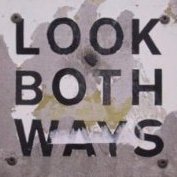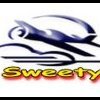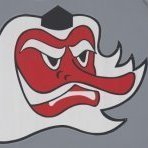
Kendzior
LSP_Members-
Posts
263 -
Joined
-
Last visited
-
 HB252 reacted to a post in a topic:
Kawasaki Ki-61-I Hien | ST 28 Hasegawa 1:32
HB252 reacted to a post in a topic:
Kawasaki Ki-61-I Hien | ST 28 Hasegawa 1:32
-
 HB252 reacted to a post in a topic:
Kawasaki Ki-61-I Hien | ST 28 Hasegawa 1:32
HB252 reacted to a post in a topic:
Kawasaki Ki-61-I Hien | ST 28 Hasegawa 1:32
-
 Kendzior reacted to a post in a topic:
P-39Q 1st Lt. M.I. Orlov 1/32 Special Hobby
Kendzior reacted to a post in a topic:
P-39Q 1st Lt. M.I. Orlov 1/32 Special Hobby
-
 Kendzior reacted to a post in a topic:
1/32 Fi 156D1 Hasegawa-Revell
Kendzior reacted to a post in a topic:
1/32 Fi 156D1 Hasegawa-Revell
-
 Kendzior reacted to a post in a topic:
1/32 Fi 156D1 Hasegawa-Revell
Kendzior reacted to a post in a topic:
1/32 Fi 156D1 Hasegawa-Revell
-
 Kendzior reacted to a post in a topic:
1/32 Fi 156D1 Hasegawa-Revell
Kendzior reacted to a post in a topic:
1/32 Fi 156D1 Hasegawa-Revell
-
 Kendzior reacted to a post in a topic:
1/32 Hasegawa P-40N Warhawk “White 21”
Kendzior reacted to a post in a topic:
1/32 Hasegawa P-40N Warhawk “White 21”
-
 Uncarina reacted to a post in a topic:
Fieseler Fi-156 Storch SP-AGO | Tristar 1:35
Uncarina reacted to a post in a topic:
Fieseler Fi-156 Storch SP-AGO | Tristar 1:35
-
 Uncarina reacted to a post in a topic:
Fieseler Fi-156 Storch SP-AGO | Tristar 1:35
Uncarina reacted to a post in a topic:
Fieseler Fi-156 Storch SP-AGO | Tristar 1:35
-
 Kagemusha reacted to a post in a topic:
Fieseler Fi-156 Storch SP-AGO | Tristar 1:35
Kagemusha reacted to a post in a topic:
Fieseler Fi-156 Storch SP-AGO | Tristar 1:35
-
 mc65 reacted to a post in a topic:
Fieseler Fi-156 Storch SP-AGO | Tristar 1:35
mc65 reacted to a post in a topic:
Fieseler Fi-156 Storch SP-AGO | Tristar 1:35
-
 Landrotten Highlander reacted to a post in a topic:
Fieseler Fi-156 Storch SP-AGO | Tristar 1:35
Landrotten Highlander reacted to a post in a topic:
Fieseler Fi-156 Storch SP-AGO | Tristar 1:35
-
 Kendzior reacted to a post in a topic:
1/32 Fi 156D1 Hasegawa-Revell
Kendzior reacted to a post in a topic:
1/32 Fi 156D1 Hasegawa-Revell
-
Fieseler Fi-156 Storch SP-AGO | Tristar 1:35
Kendzior replied to Kendzior's topic in Works in Progress
Yeah, I'm watching your Storch tread very carefully, a lot of inspiration for my build. In general I'm going to follow mainly the drawings and photos in the old Militaria monograph. It's a little old, but still very good. However, it's not going to be a super-detailed build. Thanks for comments Hubert -
 scvrobeson reacted to a post in a topic:
Fieseler Fi-156 Storch SP-AGO | Tristar 1:35
scvrobeson reacted to a post in a topic:
Fieseler Fi-156 Storch SP-AGO | Tristar 1:35
-
 Kendzior reacted to a post in a topic:
Fieseler Fi-156 Storch SP-AGO | Tristar 1:35
Kendzior reacted to a post in a topic:
Fieseler Fi-156 Storch SP-AGO | Tristar 1:35
-
 mc65 reacted to a post in a topic:
Fieseler Fi-156 Storch SP-AGO | Tristar 1:35
mc65 reacted to a post in a topic:
Fieseler Fi-156 Storch SP-AGO | Tristar 1:35
-
 LSP_Kevin reacted to a post in a topic:
Fieseler Fi-156 Storch SP-AGO | Tristar 1:35
LSP_Kevin reacted to a post in a topic:
Fieseler Fi-156 Storch SP-AGO | Tristar 1:35
-
Using this: I'm going to make that one: A nice simple kit, by the way. Several modifications to the a'la D-1 version are required (Storchs that were captured in crates after the war in Poznań were not fully assembled according to the manufacturer's specifications). I will make the variant for one patient. So, I will have to lengthen the floor, add new doors on both sides, additional windows, the interior structure, a stretcher ... . First tweaks: the additional windows cut out, removed the doors for the C-1 version on the starboard side:
-
 Kendzior reacted to a post in a topic:
1/32 Fi 156D1 Hasegawa-Revell
Kendzior reacted to a post in a topic:
1/32 Fi 156D1 Hasegawa-Revell
-
 Kendzior reacted to a post in a topic:
1/32 Fi 156D1 Hasegawa-Revell
Kendzior reacted to a post in a topic:
1/32 Fi 156D1 Hasegawa-Revell
-
 Kendzior reacted to a post in a topic:
Revell Mosquito 1/32 - Really loved this one
Kendzior reacted to a post in a topic:
Revell Mosquito 1/32 - Really loved this one
-
That's just superb, and great photos too, thanks for sharing with us Hubert
-
Curtiss Hawk H-75 A-7 (ML-KNIL) | SH 1:32
Kendzior replied to Kendzior's topic in Ready for Inspection
Thanks Kev! -
Curtiss Hawk H-75 A-7 (ML-KNIL) | SH 1:32
Kendzior replied to Kendzior's topic in Ready for Inspection
Many thanks for your comments! Well, the kit itself is a challenge. I think if it wasn't a short run kit, we'd see more of them built. Definitely, it's time for the mainstream molds. Eduard announced one in 1:48. Maybe someone, sometime... Hobby Boss? Trumpeter? Even with all their common mistakes and less than perfect accuracy. But for now I'm trying to make some space in my busy workshop for the French Hawk from Azur/SH kit. Best regards Hubert -
Curtiss Hawk H-75 A-7 (ML-KNIL) | SH 1:32
Kendzior replied to Kendzior's topic in Ready for Inspection
Many thanks Kev, sure you can Best, Hubert -
Done! Many thanks for all your comments and support, very much appreciated Best regards and Happy New Year for all of you! Hubert
-
The September 1939 campaign in Poland made it clear to the Dutch that they are completely unprepared for the conditions of modern war. They needed fighters. However, the queue with orders for the fighter aircraft was already long. France, Great Britain did not have much to offer for sale, they were in need themselves and bought them in emergency mode. The United States became the natural direction, where at the last moment Dutch managed to buy 24 Curtiss H-75 in the A7 version, for which the base was the A4, equipped with a powerful and light, yet capricious, Wright Cyclone engine - but also the fastest version of the P-36. They were produced in parallel with machines for France. However, before they reached their destination - the Netherlands fell under the attack of the Third Reich. The Hawks was therefore sent to the Dutch East Indies, to Andir (near Bandung), where they arrived in May 1940. After being assembled, flown and painted, they were sent to Madiun (East Java), where they were to defend the Surabaya naval base. The Dutch Hawks' service was short and lacking in success. After the Japanese attack on December 7, 1941, the aircraft were sent to Sumatra. They were flown from there without successes, but with victims, one of which was the pilot of the plane that you see in the gallery. On December 21, 1941, two Hawks collided during the take-off to the combat action over Western Malaya. Sergeant Paulus Casper van Breen, then a 24-year-old ML-KNIL pilot, sat behind the controls of one of them, with the serial number C329. He died on the spot. Source: https://oorlogsgravenstichting.nl/persoon/20084/paulus-casper-van-breen After the fall of Sumatra, at the beginning of February 1942, the aircraft were re-directed to Madiun, where they unsuccessfully tried to stop the Japanese air raids on Surabaya, which, however, in fights with the Zeros only resulted in the loss of five more machines and further casualties. Other planes were grounded due to defective engines and lack of spare parts, and after the Japanese invasion of Java, destroyed by the Dutch in early March 1942. The Special Hobby's kit is well worth the manufacturer's brand. Special in every aspect: quality of the molds, fit, level of details, accuracy. And isn't our hobby (inter alia) a struggle against the efforts of producers, how to do something wrong, if it could be good. So everything is all right. If you are interested in details and have strong nerves, please look for the workshop thread. The construction process was marked by numerous problems, caused by myself. First the fuselage broke twice where it was connected to the engine cowling, then after assembling the airframe and painting, I dropped it on the desk and the instrument panel inside fell off ... reinstalling it perfectly did not succeed, poor access, but I didn't want to make such a large step back and brake the fuselage into halves. Decals were too transparent, had to overpaint them. I broke one leg of the landing gear, lost one gear leg cover (the one in the front of the gear nacelle, finally I made them both of an aluminium sheet obtained from a tin of Felix peanuts), I lost the fuel filler cap too, replaced with a scratch-built one. At the end I unfortunately grabbed it with dirty fingers and the marks had to be removed ... But finally, here it is. Here it is and it proves that even with medium abilities and skills in the use of putty and file, this model can be put together. And this is probably the most important thing. Few things added: rivets, missing panel lines, modification of armament in the wings, antenna mountings on the wings, vertical stabilizer and fuselage, 0.2 mm Uschi van der Rosten antenna cables with insulators made of hygienic stick stretched over fire (does anyone use them for any other purpose, btw?), wheel well covers from CMK resin, barrels from Master. The rest - straight from the box. Painted with MRP Paints. Colors according to the AJ-Press monograph: old leaves - early US Olive Drab, young leaves - early US Medium Green, underside of wings and horizontal fins painted silver, with upper surface color over the leading edge. In combination with the orange markings - it looks very nice and different, I think. Hope you like it :). Best regards and Happy New Year! Hubert
-
Fantastic work, keep it up! That epoxy resin seems to work fine, I'd probably just use the inserts made of the HIPS sheets and never come to this idea. Worth trying. BTW. Seems all our cats like to keep a sleepy eye on us
-
Some more progress. Almost done. There is a mysterious story associated with today's session. I was about to paint the landing gear covers, those covering the front of the gondolas in the wings. I arranged everything on the desk, glued these covers to sticks with blutac, mixed the paint, turned on the compressor, connected the airbrush, poured the MRP OD 41, as a test sprayed it once or twice onto the paper towel, I reached for the sticks and ... there was only one cover. The other disappeared. Peeled off the stick. The air took it somewhere . Stay calm I thought. It must be here. But ... I have not found it. On the desk, behind the desk, under the desk. No trace of it. It is a kind of paranoia, I thought to myself. This would probably be the fourth such situation this year. Two parts from Curtiss P-40. Superstructure of a Chinese cruiser (!). Now this. Finally I made them on the basis of the saved one of the Felix nuts tin cover. Managed to shape it with the tip of the Excel knife holder, cut to shape. I can live with it. These are even more in scale. Happy end :D.
-
The propeller. Stencils borrowed from the Trumpeter's P-40B, logos from the TLH32-007 Tomahawk in the Sky decal set.
-
That's just spectacular! Great work, keep it up.
-
Added the wheels, and most of the the gear covers, the lights. Time to think about the weathering, probably will use some light earth pigments, also to emphasize the rivets just as they look at the photo in my earlier post, maybe some oils for the belly. The propeller is not turning, if anyone asked ;).
-
Source: Avions, No 34 Janvier 96, only for discussion This is a photo of this particular Hawk, C-329. Why does it look like that? I have no idea. Maybe Mr P.C. van Breen wanted to have something different and asked the servicemen to over-paint the edge of the walkway in this wavy style? Other Dutch Hawks seem to have a straight line there. It was one of two reasons why I chose this scheme (the white stripe on the fuselage was the second one). Prachtig dank u!
-
The landing gear legs installed, there was some trouble to have them in correct angles, but I think it's OK now. Some shadows added, some exhaust stains.




